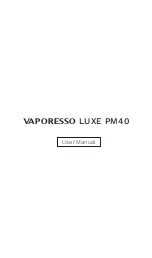
27
• Low water
temperature
• Chemical capacity exceeded
• Improper wiring/failed heater.
Fouling of heater surface
• Improper wiring/failed temperature
controller
• Pump failure/clogging
• Solenoid is stuck open allowing cold
water
• Lower feed capacity
• Check wiring/replace or clean heater
• Check wiring/replace PID controller
• Check pump for clogging. If failed
replace pump
• Close/replace solenoid. If low water
level exists, allow for the water level
to reach set point before making any
changes
• Low water level alarm
• Low water alarm
• Pump shut down and
heater is shut off
• Water level is below operating set
point
• Solenoid failed closed
• Check solenoid for correct operation
• Check water inlet lines for clogging.
Clean or replace
• Check level probes for correct
operation
• Check for water leaks
• Overfill alarm
• Water overflowing
through drain
• Water level is above operating set
point
• Solenoid failed open
• Solenoid is stuck open. Clean or
replace
• Replace water level control circuitry
• Electronic PRV is
closed while trying to
chlorinate
• No power to the actuator
• Alarm condition exists
• Actuator failed
• Restore power to unit
• Check operating parameter and adjust
improper conditions
• Inspect and replace actuator
• No cathodic
protection
• Insufficient conductivity in water
• Anodes are consumed
• Circuitry improperly connected
• Add ¼ lb. sodium sulphate to water
• Replace anodes
• Check circuitry
• Low superheat
• Design capacity exceeded
• Fouling inside/outside of pressure
chamber
• Low water temperature
• Low water level
• Lower feed rate
• Clean chlorine pressure chamber
• Follow corrective action for low water
temperature and/or low water level
• Corrosion of chlorine
pressure chamber
• Poor cathodic protection
• Moisture in manifold piping
• Check anodes and cathodic protection
system
• Replace chlorine pressure chamber is
weight is less than 10 lbs. of original
or corrosion exceeds
1
⁄
8
" anywhere





































